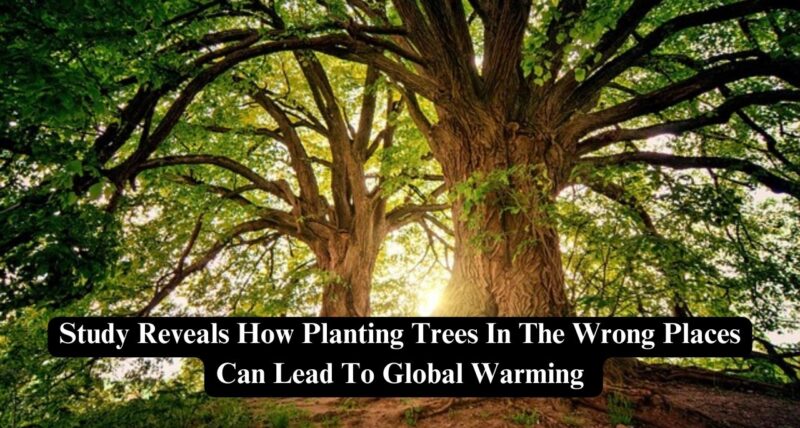Trees are known to be effective at absorbing carbon dioxide, which warms the planet. We were encouraged to plant trees and increase forest cover. It was widely considered to be a crucial part of the struggle against the phenomenon of global warming. However, a recent study suggests that planting trees may be contributing to global warming instead of reducing it.
Incorrect Tree Planting Fueling Global Warming
According to experts, if we continue to plant trees in the incorrect locations, we may potentially worsen global warming. Planting saplings is a crucial strategy for combating global warming by increasing forest cover. This is because trees absorb carbon dioxide. However, new research has been published in the journal Nature Communications regarding this matter. It suggests that the presence of more trees on Earth leads to increased heat absorption and reduced sunlight absorption. Reforestation may, in certain cases, have net negative climatic effects, according to research coauthor Susan Cook-Patton. A recently created map indicates the ideal spots for cooling the Earth and regrowing woods. Cook-Patton emphasized that the maps offer politicians a strategic tool to allocate their limited resources effectively to influence climate change.
The Right Way To Plant Trees And Curb Global Warming
Albedo is strongest in the icy regions of the planet. High-albedo snow and ice reflect up to 90% of the sun’s radiation, making them appear mirror-like and spotless. Scientists previously knew that increasing forest cover affected albedo, or the amount of solar radiation reflected off the globe’s surface. However, they lacked the instruments to consider it, she stated. In the first stage, scientists took into account the warmth brought on by reduced albedo. They also considered the cooling impact of trees thanks to the new maps. Studies that overlooked albedo overstated the positive impact of more trees on the climate by 20-80%. Along with it, seas, lands, and greenhouse gas emissions absorb extra heat, making them the Earth’s primary cooling mechanisms.
The Motive
Increasing the number of trees in a region remains a practical way to slow down the impact of global warming. And she wanted to help others find these places. Several nations have pledged to plant trees in billions to combat global warming. However, this study revealed that not all initiatives have the same positive effects on the environment. The Amazon and the Congo Basin are examples of moist, tropical regions. They are perfect for reintroducing forest cover because of their high carbon storage capacity and few albedo changes. According to Cook-Patton, the reverse was accurate in temperate grasslands and savannas. When albedo variations were considered, even the best-located projects were likely to provide 20% less cooling than anticipated.
The researcher emphasized that forest restoration has indisputable advantages for both humans and the environment. These include the provision of clean water and air, the maintenance of ecosystems, and many more. She declared that she did not wish for the movement as a whole to be critiqued through what she did. We cannot plant trees everywhere. Money, time, resources, people, and seeds are all insufficient for us. The goal is to maximize the climatic return per acre by optimizing the restricted investments.



